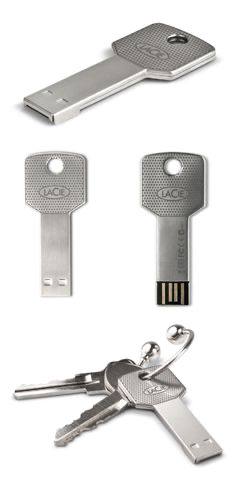Looking for recommendations for a versatile USB stick with Ventoy. I’m trying to create the “perfect, all-in-all” USB stick using Ventoy to store various ISOs and rescue tools. So far, I have the following ISOs:
- Arch
- OpenSuse TW
- NixOS
- Bazzite + AuroraDX
- Win10 ISO
- Clonezilla
I’m looking for suggestions on additional ISOs or tools that are compatible with Ventoy. What do you recommend adding to make my USB stick to make it more useful?
Hirens boot cd is a great tool if you’re working with windows. You are not always going to need it, but when you do need it it’s awfully nice to have it.
Haven’t heard of Hiren’s BootCD in like 15 years. Good to see it’s still around!
It actually saved my life a few months back, I had a dying windows server I needed to resurrect and the tools on there were perfect for it.
deleted by creator
Do yourself a favor and skip the USB drive - they are ridiculously slow compared to a compact external SSD. I found a cheap m.2 enclosure on Amazon and put an old SSD in it and the speed difference is breathtaking.
My SSD has a bunch of Linux distros grouped into folders along with Windows 10 & 11, every macOS from 10.13 to present, along with Rescuezilla, Hiren’s and a few others I can’t remember at the moment.
Rescuezilla was my #1 go-to during my days of distro hopping. Makes it super easy to try out a distro on bare metal instead of a VM.
How do you select which one to boot?
I use Ventoy to boot everything but macOS. Those installers need their own partitions on the SSD.
Check out ventoy
Looking at my Ventoy stick i have multiple folders for different OS:
Arch_Based:
- CachyOS
- Garuda
Debian_Based:
- Debian Bookworm
- Mint
- Zorin OS
Fedora_Based:
- Fedora Silverblue
- Nobara
GamingBox
- Bazzite
- ChimeraOS
ServerOS:
- Ubuntu Server
- TrueNAS Scale
Windows:
- Tiny10
- Tiny11
Tools:
- Avira Rescue System
- SuperGrub2
- UBCD
Thanks for sharing! What size is your usb-stick?
It’s a 64GB stick and i manually keep it in sync with my netbootxyz instance
Ohhh I’ve meant to try out netbootxyz for a while now, thanks for the reminder!
you’re welcome!
to be fair, it’s more of a gimmick when using it in your home. I have a notebook that i use to test out new distros on and i can hook it up to my LAN and quickly install something without whipping out the USB stick.
Also the mini gaming pc hooked to my TV is a victim of being reinstalled every couple months after i tinker around too much.
What’s on my USB stick you ask… A bunch of random shit I haven’t touched for 8 years so I have no idea what it is and it’s probably outdated, but I’d be damned if that usb stick is not In my keychain because “I might need it one day”
Ventoy with Arch and Rescue bootable images. And a portable cross platform encryption tool just in case.
Can you give us some names? Sounds intriguing
Rescue image: SystemRescue
Portable Encryption Tool: Picocrypt
Arch Linu, Kubuntu, Supergrub, Tails, Kali, Windows
I work in a PC repair shop and I run my tool stick on this way. By the way, you can just put a folder in your Ventoy and store non-iso files so you can have portable apps and so on.
- Acronis (can clone to reduced size drives unlike clonezilla which can only clone to equal or bigger)
- MemTest86 & MemTest86+ (+ is the FOSS one. Recommend both because sometimes one won’t work)
- Don’t forget that you can put other stuff in a Ventoy, not just .isos. I have shitlods of utilities in a folder beside all the .isos.
- Tons more but I just woke up for work. I will make this list much longer when I get there of I can remember to
Edit: ADHD did ADHD things. Here’s some more stuff. A lot of it is Windows-centric because that’s what we specialize in. ISOs:
- PC Unlocker (Windows password remover, paid)
- Gandalf’s Windows Preboot (similar to Hirans, but modern. Paid.)
Utilities:
- CrystalDiskInfo (SMART checks and more on SSDs)
- CrystalDiskMark (SSD benchmark)
- FastCopy (Windows copy utility. Free)
- HDTunePro (v5.00 specifically. After this, license binds to a single machine. HDD SMART checks, benchmark, secure erase, sector scans, and more.)
- OCCT (CPU, GPU, Memory, PSU, and other checks and stress tests. Top-tier tool.)
- F6 Drivers (drivers for NVMe detection on some laptops)
- Spacesniffer (visual representation of disk utilization. Similar to WinDirStat, but looks nicer/runs quicker imo. Free.)
Back to the days I was fixing a lot of computers of friends and relatives, my Swiss army knife of Linux was https://www.system-rescue.org/
Very lightweight but with a full set of recovery tools. I’ve tried it recently and I still find it up to the expectations.
I’ve also used a fair amount of https://clonezilla.org/ to (re)store images of freshly installed OSes (mostly windows XP and 7 to give you an idea of the timeframe) for people who I know would have messed up faster.
Removed by mod
If I need to do an emergency boot from a USB stick to repair something that can’t boot, which it sounds like is what you’re after, pretty much any Linux distro will do. I’d probably rather have a single, mainstream bootable OS than a handful.
I’d use Debian, just because that’s what I use normally, so I’m most familiar with it. But it really doesn’t matter all that much.
And honestly, while having an emergency bootable medium with a functioning system can simplify things, if you’re familiar with the boot process, you very rarely actually need emergency boot media on a Linux system. You have a pretty flexible bootloader in grub, and the Linux kernel can run and be usable enough to fix things on a pretty broken system, if you pass something like
init=/bin/shto the kernel, maybe busybox instead for a really broken system, and can remount root read-write (mount -o rw,remount /) and know how to force syncs (echo s > /proc/sysrq-trigger) and reboots (echo b > /proc/sysrq-trigger).I’ve killed ld.so and libc before and broght back systems without alternate boot media. The only time I think you’d likely really get into trouble truly requiring alternate boot media is (a) installing a new kernel that doesn’t work for some reason and removing all the old, working kernels before checking to see that your new one works, or (b) killing grub. Maybe if you hork up your partition table or root filesystem enough that grub can’t bring the kernel up, but in most of those cases, I’m not sure that you’re likely gonna be bringing things back up with rescue tools – you’re probably gonna need to reinstall your OS anyway.
EDIT: Well, okay, if you wipe the partition table, I guess that you might be able to find the beginning of a filesystem partition based on magic strings or something and either manually reconstruct the partition table or at least extract a copy of the filesystem to somewhere else.
“Rarely happens”
And yet it still happens often enough if you touch enough boxes or make enough changes across enough boxes.
The thing is, you never know when or where an unbootable box is going to occur. This is why I’ve carried a loaded thumbdrive for ~20 years (Lacie IAmAKey was my latest, wish they still made them - mine finally died. Knockoffs are available, unfortunately the casing is aluminum, not stainless, so they’re easy to bend). And why I keep hot spares around.

I keep an iodd mini with all the current and past repair isos. Then I have a folder.i keep the tooling income.upmwoth for various repair or automation stuff. I got a batch script (need to move to winger) to auto install all my standard day one software. On mobile otherwise I would pull up the list and throw it in here. If you are curious let me know and I’ll reply with the list when I get time.
I’m an arch user, and also have a small proxmox based homelab. I always have a live Ubuntu around, the latest desktop version available. Good for troubleshooting. Also, latest proxmox, opnsense, pfsense, debian.
Additionally, I have a small USB drive on my keychain with both USB C and USB A, where I keep some encrypted backups of important stuff, and I can access that from both my laptop and my phone.
I don’t keep a Swiss army knife set of distros anymore. I put tumbleweed on a USB. It’s rolling so I update it when I plug it in, then do what I need to do.
I used to have a USB with Ubuntu LTS and whatever the newest Ubuntu was. Then another would get something else that I needed/wanted. I always ended up wiping the drive and adding the newest release every single time. I was always out of date by the time I needed one of them for boot repair or something. This was also a time when persistence… Wasn’t very persistent. With tumbleweed I can install whatever I need and it’s there next time. I’m sure you can do the same with any other rolling release, but tumbleweed is in my opinion on par stability-wise with incremental distros. It’s my first grab whenever I need to check a PC. If I need another distro or boot USB, I can make it from this one with a second USB. I suppose the only thing I can’t do is make a bootable USB if the computer I’m on can’t access the Internet
Inside Ventoy: SystemRescue, Clonezilla, Debian netinstall, Ubuntu netinstall, Tails, GParted live, FreeBSD bootonly, Supergrub 2, Windows Server 2019 evaluation, Windows 11 22H2.
It’s like…maybe like an eagle or something?









